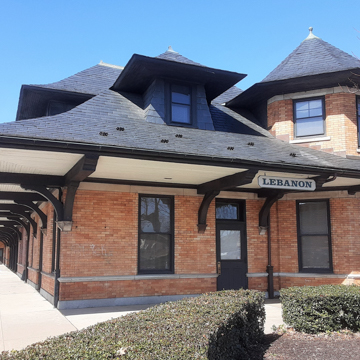Wilson Brothers, the longtime competitors of the Hewitts in the Philadelphia region, chose a modern light-colored palette of Pompeian brick and limestone trim for this station. The delicately massed tower and slightly upturned roofs lighten the appearance of the building and connect it to the contemporary Arts and Crafts, though they termed it as being of the “Italian Style.” With its freight offices connected by a shelter that continues the lines of the main roof, it hints at the coming horizontality of the Prairie School.
You are here
Philadelphia and Reading Station
If SAH Archipedia has been useful to you, please consider supporting it.
SAH Archipedia tells the story of the United States through its buildings, landscapes, and cities. This freely available resource empowers the public with authoritative knowledge that deepens their understanding and appreciation of the built environment. But the Society of Architectural Historians, which created SAH Archipedia with University of Virginia Press, needs your support to maintain the high-caliber research, writing, photography, cartography, editing, design, and programming that make SAH Archipedia a trusted online resource available to all who value the history of place, heritage tourism, and learning.









